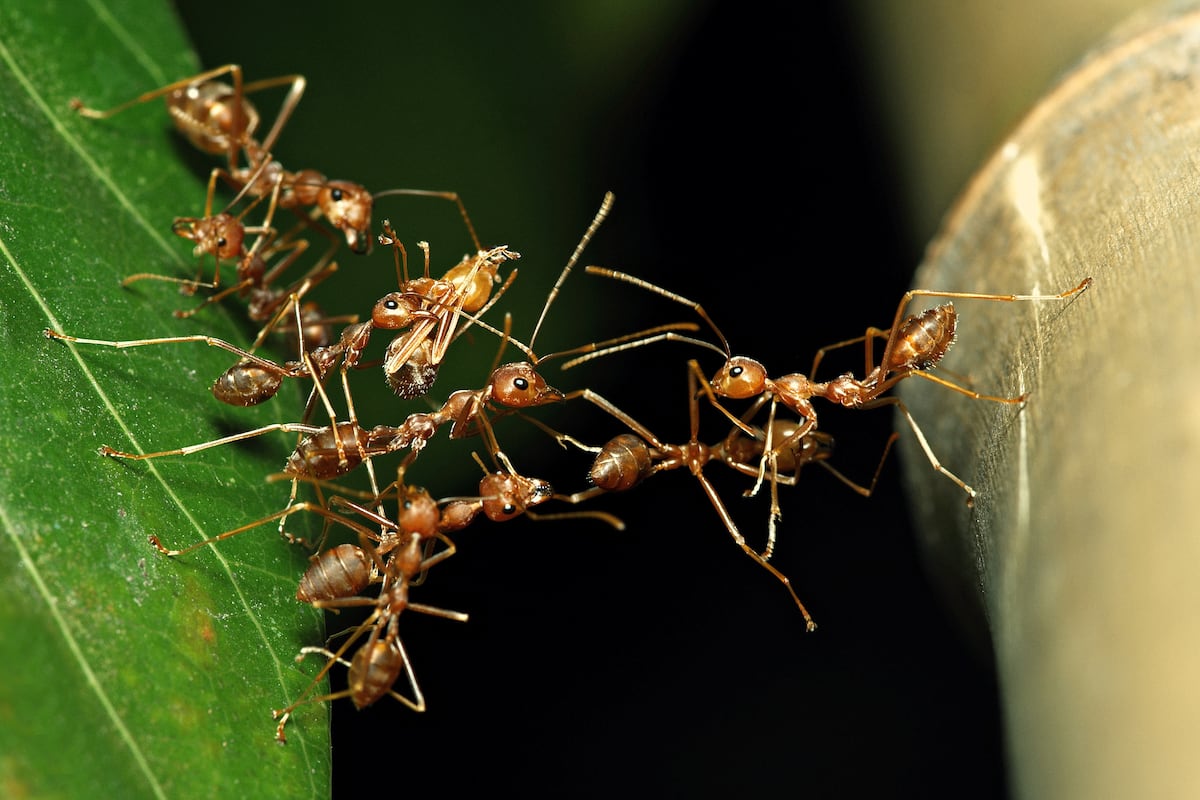
"Army ants exhibit a fascinating behavior where they form temporary living bridges out of their bodies, showcasing collective assembly and adaptability to their forest environment."
"The architecture of animal structures like beehives and termite mounds reveals complex innate behaviors shaped by evolution, pointing to genetic influences on these actions."
"Naturalist Thomas Belt's observations challenged the notion that such behaviors in ants required cognition, instead highlighting simple behavioral rules that guide their architectural feats."
The article explores the complex behaviors underlying animal architecture, exemplified by structures like beehives and termite mounds. It emphasizes that such architectural feats are largely innate, driven by evolutionary adaptations. A notable example discussed is the behavior of army ants, which collectively form living bridges to navigate challenging environments. This phenomenon highlights that such intricate patterns do not arise from centralized planning or advanced reasoning, but from simple behavioral rules based on tactile sensing and pheromones, illustrating a fundamental connection between genetics and behavior in evolutionary terms.
Read at english.elpais.com
Unable to calculate read time
Collection
[
|
...
]